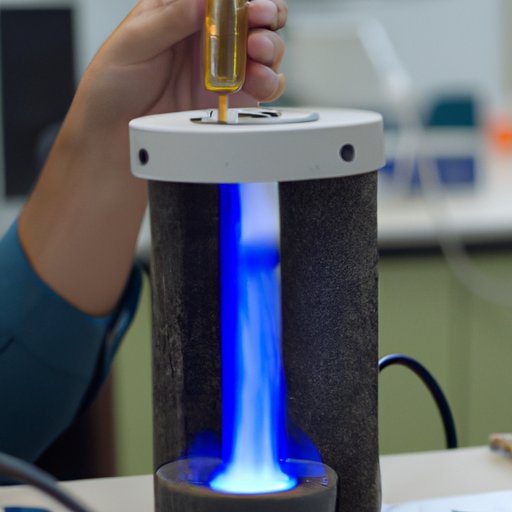Introduction
Heat transfer is the process of moving energy from one object or space to another. Heat will always move from a hotter to a colder environment, so the rate of heat transfer depends on the temperature difference between the two surfaces. Measuring the speed at which heat travels can help us understand how objects and spaces interact with each other, as well as how we can use this knowledge to design better buildings and materials.

Measuring the Speed of Heat Transfer
Measuring the speed of heat transfer requires understanding how heat moves from one material to another. Heat transfer typically occurs through three primary mechanisms: conduction, convection, and radiation. Each of these processes has a different rate of energy transfer and thus affects the overall speed of heat transfer.
In addition to these primary mechanisms, there are several factors that can affect the speed of heat transfer. These include the thermal conductivity of the material, the thickness of the material, the amount of air circulation, and the presence of any insulation. By understanding and measuring the effects of these factors, scientists and engineers can determine the speed of heat transfer in different materials.
Exploring Different Heat Transfer Methods and Their Speeds
The speed of heat transfer in different materials can vary greatly depending on the type of heat transfer taking place. For example, heat transfer through conduction occurs when molecules within a material move energy from one molecule to another. The speed of conduction is determined by the material’s thermal conductivity, which is a measure of how quickly the energy is transferred.
Heat transfer through convection occurs when air or liquid carries energy from one location to another. The speed of convection is determined by the amount of air or liquid present, as well as the temperature difference between the two locations.
Finally, heat transfer through radiation occurs when energy is transferred through electromagnetic waves. This type of heat transfer is not affected by the presence of air or liquid, but instead relies on the temperature difference between the two locations. The speed of radiation is determined by the temperature of the two surfaces.

Analyzing How Heat Moves from Hot to Cold Surfaces
The principles of thermodynamics play an important role in understanding how heat moves from one surface to another. According to the first law of thermodynamics, energy cannot be created or destroyed, it can only be transferred. This means that the total amount of energy in a system remains constant, even as heat is transferred from one surface to another.
The second law of thermodynamics states that heat will always move from a hotter to a colder surface. This phenomenon is known as the flow of thermal energy, and is the basis of all heat transfer. By understanding the principles of thermodynamics, scientists and engineers can better understand how heat moves from one surface to another and how materials interact with each other.
Conclusion
Heat transfer is the process of moving energy from one object or space to another. The speed of heat transfer is determined by the type of heat transfer taking place and the factors that affect it, such as the thermal conductivity of the material, the thickness of the material, and the presence of any insulation. Understanding the principles of thermodynamics and how heat moves from hot to cold surfaces is essential for designing materials and buildings that effectively manage heat transfer.
This article explored how fast does heat travel and the different methods for measuring heat transfer speed, as well as their speeds. By understanding and measuring the effects of different factors, scientists and engineers can determine the speed of heat transfer in different materials, which can be used to improve building designs and materials.
(Note: Is this article not meeting your expectations? Do you have knowledge or insights to share? Unlock new opportunities and expand your reach by joining our authors team. Click Registration to join us and share your expertise with our readers.)
